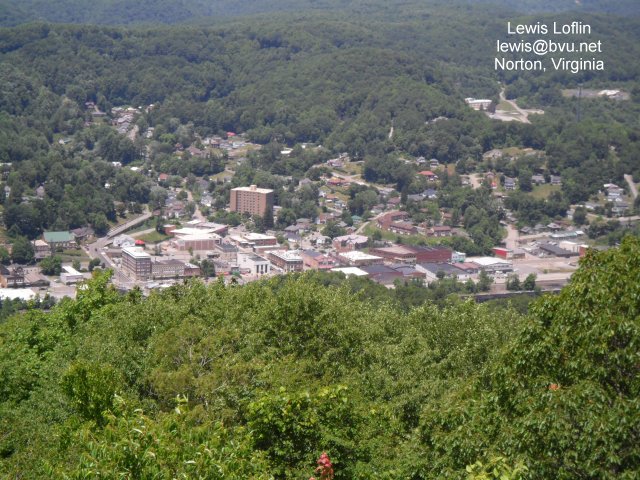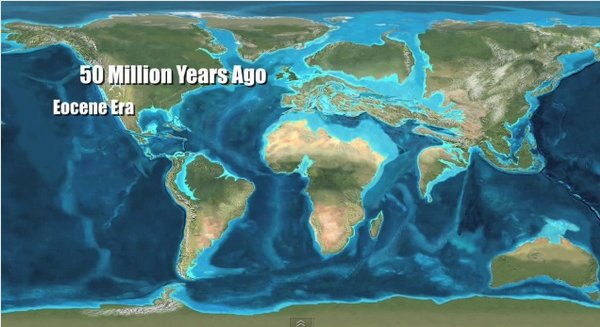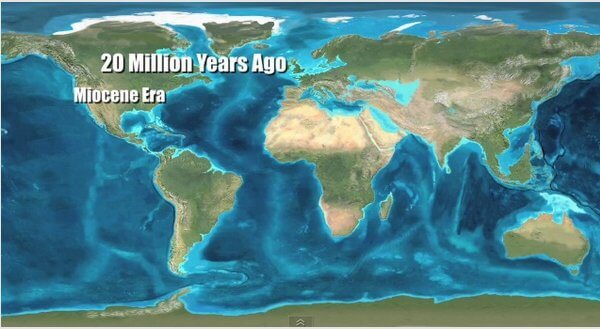
1975 Government Study on Climate Change Raises Questions
Compiled Lewis Loflin
In August 2019 I came across a 1975 study National Academy of Sciences study "Understanding Climatic Change A program for Action".
I have the entire study and you can read it yourself. Below are extracts on how variable climate really is. They were concerned over global cooling entering a new ice age.
Climate change is normal.
Download climate_1975.pdf


P1-2 extracts.
It is not primarily the advance of a major ice sheet over our farms and cities that we must fear, devastating as this would be, for such changes take thousands of years to evolve. Rather, it is persistent changes of the temperature and rainfall in areas committed to agricultural use, changes in the frost content of Canadian and Siberian soils, and changes of ocean temperature in areas of high nutrient production, for example, that are of more immediate concern...
Because world grain reserves are but a few percent of annual consumption, an unfavorable crop year, such as occurred in the Ukraine in 1972, has immediate international consequences.
Our vulnerability to climatic change is seen to be all the more serious when we recognize that our present climate is in fact highly abnormal, and that we may already be producing climatic changes as a result of our own activities...
The climates of the earth have always been changing, and they will doubtless continue to do so in the future. How large these future changes will be, and where and how rapidly they will occur, we do not know.
Because world grain reserves are but a few percent of annual consumption, an unfavorable crop year, such as occurred in the Ukraine in 1972, has immediate international consequences. The current drought in parts of Asia and in central Africa is producing severe hardship and has already caused the migration of millions of people.
As the world's population grows and as the economic development of newer nations rises, the demand for food, water, and energy will steadily increase, while our ability to meet these needs will remain subject to the vagaries of climate...
Reducing this climatic dependency will require coordinated management of the nation's resources on the one hand and a thorough knowledge of the climate's behavior on the other...
There is no doubt that the earth's climates have changed greatly in the past and will likely change in the future. But will we be able to recognize the first phases of a truly significant climatic change when it does occur?
A striking feature of the instrumental record is the behavior of temperature worldwide. As shown by Mitchell (1970), the average surface air temperature in the northern hemisphere increased from the 1880's until about 1940 and has been decreasing thereafter (see Figure A.6, Appendix A). Starr and Oort (1973) have reported that, during the period 1958-1963, the hemisphere's (mass-weighted) mean temperature decreased by about 0.6 °C. In that period the polar and subtropical arid regions experienced the greatest cooling. The cause of this variation is not known, although clearly this trend cannot continue indefinitely.
From the overview of the geological time scale, we live in an unusual epoch: today the polar regions have large ice caps, whereas during most of the earth's history the poles have been ice-free. As shown in Figure A. 15 of Appendix A, only two other epochs of extensive continental glaciation have been recorded, one during late Precambrian time (approximately 600 million years ago) and one during Permo-Carboniferous time (approximately 300 million years ago). During the era that followed the Permo-Carboniferous ice age, the earth's climates returned to a generally warmer, nonglacial regime.
Before the end of the Mesozoic era (approximately 65 million years ago) climates were substantially warmer than today. At that time, the configuration of the continents and shallow ocean ridges served to block a circumpolar ocean current in the southern hemisphere. This barrier was formed by South America and Antarctica, which lay in approximately their present latitudinal positions, and by Australia, then a northeastward extension of Antarctica.
About 50 million years ago, the Antarctic-Australian passage opened as Australia moved northeastward and as the Indian Ocean widened and deepened. By about 30 million years ago, the Antarctic circumpolar current system was established, an event that may have decisively influenced the subsequent climatic history of the earth.
About 55 million years ago global climate began a long cooling trend known as the Cenozoic climate decline (see Figure A.15). Approximately 35 million years ago there is evidence from the marine record that the waters around the Antarctic continent underwent substantial cooling, and there is further evidence that about 25 million years ago glacial ice occurred along the edge of the Antarctic continent in some locations.
During early Miocene time (approximately 20 million years ago) there is evidence that the low and middle latitudes were somewhat warmer. There is widespread evidence of further cooling about 10 million years ago, including the growth of mountain glaciers in the northern hemisphere and substantial growth of the Antarctic ice sheet; this time may be taken as the beginning of the present glacial age.
Evidence from marine sediments and from continental glacial features indicates that about 5 million years ago the already substantial ice sheets on Antarctica underwent rapid growth and even temporarily exceeded their present volume.
Three million years ago continental ice sheets appeared for the first time in the northern hemisphere, occupying lands adjacent to the North Atlantic Ocean, and during at least the last 1 million years the ice cover on the Arctic Ocean was never significantly less than it is today.
Once the polar ice caps formed, they began a long and complex series of fluctuations in size. Although the earlier record is still not clear, the last million years has witnessed fluctuations in the northern hemisphere ice sheets with a dominant period on the order of 100,000 years (see Figure A. 2).
These fluctuations may have occurred in parallel with substantial changes in the volume of the West Antarctic ice sheet.
By comparison, however, changes in the volume of the ice sheet in East Antarctica were quite small and were probably not synchronous with glaciations in the northern hemisphere.
The major climatic events during the past 150,000 years were the occurrence of two glacial maxima of roughly equal intensity, one about 135,000 years ago and the other between 14,000 and 22,000 years ago.
Both were characterized by widespread glaciation and generally colder climates and were abruptly terminated by warm interglacial intervals that lasted on the order of 10,000 years. The penultimate interglacial reached its peak about 124,000 years ago, while the present interglacial (known as the Holocene) evidently had its thermal maximum about 6000 years ago.
Between 22,000 and 14,000 years ago the northern hemisphere ice sheets attained their maximum extent (see Figure A. 24). The eastern part of the Laurentide ice sheet (which covered portions of eastern North America) and the Scandinavian ice sheet (which covered parts of northern Europe) both attained their maxima between 22,000 and 18,000 years ago, several thousand years before the maximum of the Cordilleran ice sheet.
About 14,000 years ago deglaciation began rather abruptly, and the Cordilleran sheet melted rapidly and was gone by 10,000 years ago. The interval of deglaciation (14,000 to 7000 years ago) was marked in many places by significant secondary fluctuations about every 2000 to 3000 years.
In general, the period about 7000 to 5000 years ago was warmer than today, although the records of mountain glaciers, tree lines, and tree rings reveal that the past 7000 years was punctuated in many parts of the world by colder intervals about every 2500 years, with the most recent occurring about 300 years ago.
For the last 1000 years, the proxy records generally confirm the scattered observations in historical records. The cold period identified above is seen to have consisted of two periods of maximum cold, one in the fifteenth century and another in the late seventeenth century. The entire interval, from about 1430 to 1850, has long been referred to as the Little Ice Age and was characterized in Europe and North America by markedly colder climates than today's.
- Environmentalism 50 Years of Observation
- Government Study on Climate Change Raises Questions
- Paradise California Fire Ignore Natural Causes
- Ecology as Environmental Socialism
- Peripheral Virginia Versus Climate Change Activism
- Nature's End? Crackpots Get It Wrong Again
- Our Obsession with Armageddon, Some Welcome It
- Science Ignorance Doomed Biosphere 2
- Common Sense Environmentalism
- Spiritual Ecology Versus Science
- Dr. James Hansen Paid Environmentalist
- Green Spiritualism Won't Save Appalachia
- How Homeostasis, Hysteresis Regulate Climate
- Dissecting Al Gore's Book Earth in the Balance
- Postmodernism Attacks Reason, Science, and Culture
- Example of Applied Reason with Electronics
- What is Actualism in Earth Science? Australia Drought
- Crackpot Biochemist Predicts End of World
- Crackpot Entomologist Predicts Mass Starvation
- Crackpot Press Falsely Blames CO2 for Great Lakes Water Level Changes
- Green Technology Highly Polluting, Environmentally Destructive
- Get Back to Earth Science
- Why Do EPA Scientists Oppose Public Disclosure?
- Why Public Disclosure is a Right
- Mechanism Not Spiritualism the Basis of Science
- Eocene Epoch Versus Modern Climate Hysteria
- Fall of the Late Roman Empire
- End of the Vikings in Greenland
- Lost Colony of Roanoke Island
- Whale Fossils Show Ice Free Arctic
- Geiger Counter Introduction
- Climate Change and Volcanoes
- Webmaster
- Electronics
- US Constitution
- History
- General 1
- General 2
- Environmentalism 1
- Environmentalism 2
- Immigration
Web site Copyright Lewis Loflin, All rights reserved.
If using this material on another site, please provide a link back to my site.


